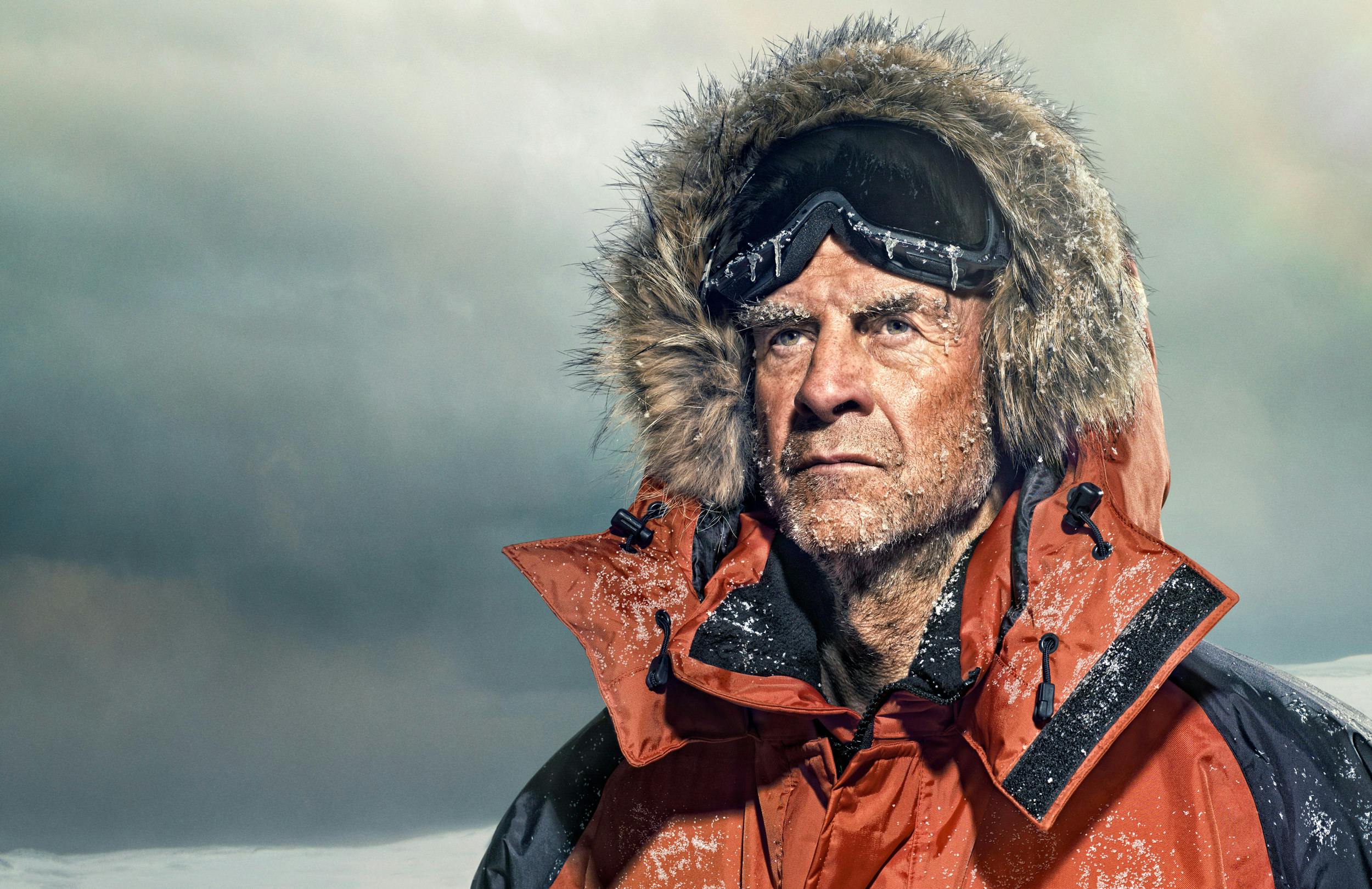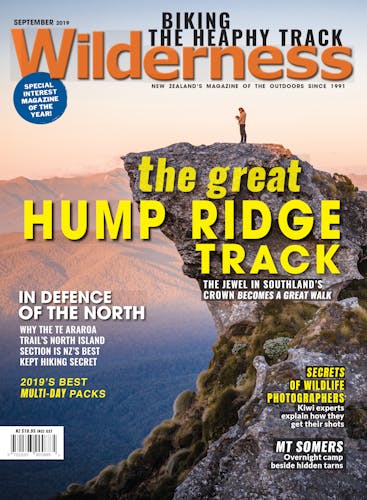Dubbed the world’s greatest living explorer, Sir Ranulph Fiennes opens up on his fears, Mt Everest attempts and an admiration for Sir Edmund Hillary.
Look closely at Sir Ranulph Fiennes, and you’ll notice the marks of adventure.
A gash in his dress shoe relieves pressure on an old frostbite wound – the skin graft, he says, fell off in the bath years ago and it’s been painful ever since.
The fingertips of his left hand went the same way.
Mummified by frostbite, the digits were sawn off with a fretsaw in the garage by an impatient Fiennes and his late wife Ginny, months before a scheduled operation.
If he felt pain or saw blood, the blade would be moved closer to the blackened tips.
“I do remember the thumb took two days because the bone was much thicker than the other ones,” he says without sentiment, as though talking about salami sliced for a sandwich.
“After I had all five on the table, I couldn’t throw them away – I’d had them for over 50 years.”
More than his battle wounds, Fiennes’ eyes share the hints of a life well-lived. Sheltered beneath imposing eyebrows – which would keep his eyes safe in all but a blizzard – they are lively and curious, with an intensity that betrays the stories behind them.
And stories he has by the bucketload.
Fiennes was in New Zealand in July with the Himalayan Trust to celebrate the centenary year of New Zealand’s greatest explorer Sir Edmund Hillary.
He was nine-years-old when Sir Ed and Tenzing Norgay climbed Everest, but the feat imprinted on Fiennes and steered his course towards adventure.
Hillary immediately joined the ranks of Fiennes’ two greatest role models – his father, and doomed Antarctic explorer Robert Falcon Scott – all three of whom Fiennes never met.
“My dad was killed in the war four months before I was born, and mum brought me up on stories about him, so I had dad, Scott and Hillary,” Fiennes says.
Before finding his feet in the snow and ice, Fiennes followed his father into the armed forces, where he served for eight years, but his thirst for adventure eventually won him over.
“As I grew up, it was easier to think of joining the army than of climbing mountains and setting geographical records, so I went for the army,” he says. “When it didn’t work out, I ended up having to do something else and all of that early romantic stuff of Hillary came out as the obvious alternative.”
And so the adventures began, from a hovercraft journey up the Nile River to an unsupported journey across Antarctica.
Perhaps Fiennes’ most renowned journey was the gruelling Transglobe Expedition, a 14-month traverse from the South Pole to the North Pole.
On conquering Everest
Despite his deep admiration for Hillary, it took Fiennes nearly 40 years of exploring and record-breaking to attempt to follow his footsteps.
More than just a peak, Everest was a confrontation of Fiennes’ biggest fear.
“I broke away briefly because my late wife died, and for a year I couldn’t do a damn thing – I was just miserable,” he says.
“[Eventually] I thought I better get back to life again, so I decided I would confront something meaningful, like a phobia.”
For a man who amputated his own fingers, Fiennes’ phobias are reassuringly familiar – spiders and vertigo (and to a lesser degree, he says, marital arguments and taxes).
The former he faced while deployed in the desert with the Arab army, where hand-sized spiders made a habit of slipping into sleeping bags.
Showing fear in front of his men proved a horrifying motivator, and his arachnophobia crawled away before long.
Forced confrontation, Fiennes calls it, and for the most part it’s worked for him, although he admits he’d still much rather send his second wife Louise up a ladder while he holds the base.
Despite his best efforts, Everest didn’t topple easily for Fiennes, who reached the summit in 2009 after two failed attempts.
His first in 2005 was thwarted by a heart attack, his second by a change of heart. On the ascent, the team had to walk past the body of their sherpa’s father, who had died on the mountain.
“He’d been past his father’s body previously, but not when it was visible. There hadn’t been much snow the previous year so the body had become visible – it wasn’t good,” Fiennes says.
Not long after, the team walked by the body of a friend of Fiennes, also lost to the mountain, and crevasses cracked their morale wide open.
“When we got up to the buttress, only four and a half hours from the summit, they were burying a Swiss climber who had been to the top a couple of hours earlier without oxygen.
“He was a very good climber, but he got hypoxia on the way down, and I wimped out.”
Fiennes’ successful summit in May 2009 came with relatively little drama, but it was still a colourful experience.
“I went with a really good sherpa, who sadly died last year in an avalanche, and he got me up to the top without a problem – I couldn’t work out why I’d made such a mess of it twice,” Fiennes says.
The pair made the summit in the middle of the night, which made filming the achievement for a BBC documentary difficult.
With the cameraman sick, sherpa Thundu had been taught how to operate a basic camera to capture the moment, but he had other ideas.
“Thundu shakes my hand at the top and says, ‘now we go down’, because a sherpa’s reputation is that they don’t hurt tourists, and therefore you don’t linger on the top when you get there,” Fiennes says.
Adamant about the footage, Fiennes convinced Thundu to take a photograph, but still hours before dawn, there was not enough light so the pair began their long wait for sunrise.
“Dawn comes – at which point we are quite cold – and so I say, ‘enough light?’ And he gets it out and says, ‘camera frozen’,’ Fiennes says.
“I was definitely more frightened by the BBC than I was of staying up there, so we waited.”
Eventually, the frozen pair were joined on the summit by a couple, who were happy to photograph the long-awaited moment – and happier still to sell the photographs back to the BBC.
“The BBC was not happy,” Fiennes says.
On confronting vertigo on the murder wall
Having conquered Mt Everest, Fiennes was disappointed to find that no point on the route was sheer enough to provoke his vertigo, and his fear remained unchallenged.
He set himself a new challenge – climbing Switzerland’s infamous North Face of the Eiger.
“The Germans call it Mordvand – murder wall – because so many people have been killed on it,” Fiennes says.
“It took three days and nights, and at the end of it I’d had some really scary stuff.”
The most demanding section for Fiennes was the ‘Traverse of the Gods’ – a section of the route which forces climbers to look down at their footholds.
“When you’re climbing you don’t ever look down, but more importantly, you don’t let yourself think down – you must control your brain like a light switch,” he says.
After three days of looking up, the traverse was the forced confrontation Fiennes had been looking for. But did it cure his vertigo?
“I have never climbed again,” he says.
On the Mt Everest crowds
The Everest queues that shocked the world this year also made an impression on Fiennes, who says a second rope should be added to reduce bottle-necks.
“Nobody is climbing up Everest, they’re all walking up Everest, and every now and again you get somebody who shouldn’t be there because they don’t know the basics,” he says.
“I would have been so frightened, knowing you couldn’t move backwards and you couldn’t move forwards, and the needle on your [oxygen] dial was slowly dropping.”
Cutting the number of climbers on the mountain isn’t fair on Nepal, he adds.
“It’s a poor country, and they get a hell of a lot of money that way – particularly the sherpas who make a living for their family – so the obvious answer of cutting down the number of people each year is not good at all.”
On hating your expedition partner
Fiennes loves flapjacks, but after 50 days of receiving a smaller ration portion on an Antarctic expedition, he was nearly at breaking point.
Mike Stroud – his long-time expedition partner – was dealing him a short straw on his favourite snack, and it was causing not just dislike, “but hatred”.
“If you say that sort of thing, rather than thinking about it, it can cause bad relations, and you mustn’t do that if you can avoid it. You can let the hatred go on in your head, but you can’t come out with it,” Fiennes says.
After 80 days of smaller rations, however, it all became too much and he raised the issue with Stroud, who calmly agreed Fiennes could choose his own half of the flapjack.
“I looked down, and mine still looked smaller, even though I’d chosen it. You just become unpleasant,” Fiennes says.
In the Arctic, polar bears will generally attack the last person in line, so wherever possible, Fiennes would put Stroud at the back, armed with a revolver for protection.
Years later, after a few beers at the pub, Fiennes learned this decision could have been a fatal mistake.
“[Stroud] said ‘I hated you so much on that trip, I spent a lot of time planning where I would shoot you’,” Fiennes said.
“We had a good laugh about it, but then two years later, we’re back in the Arctic and again Mike is behind me with the revolver, and it all comes back. But then you get back home and realise you wouldn’t want to go with anyone else.
“The one thing worse than company, is being by yourself – you have no one to hate.”








